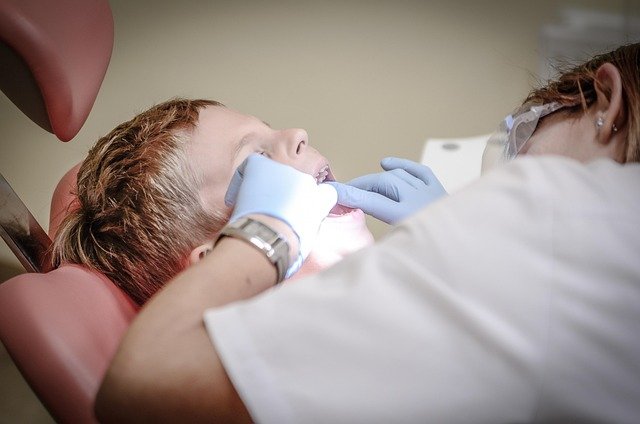Everything You Need To Know About Cremation Services And Costs In 2025
Cremation is evolving in 2025 to meet growing demand and cultural shifts. Understanding current options, costs, and innovations helps families make informed decisions during tough times. This guide covers the key aspects of cremation services, cost factors, and new developments in the industry.

When planning end-of-life arrangements, many Australians are choosing cremation as a dignified and practical alternative to traditional burial. The cremation process involves reducing the body to ashes through high-temperature exposure in a specialized chamber. This method has gained acceptance across diverse cultural and religious backgrounds, offering flexibility in memorial services and final disposition options. Understanding what cremation entails, how it differs from burial, and what services are available can help families navigate this sensitive decision with confidence.
Burial vs. Cremation: Fundamental Differences
The choice between burial and cremation represents one of the most significant decisions in funeral planning. Traditional burial involves placing the deceased in a casket and interring them in a cemetery plot, which requires ongoing maintenance and typically involves higher upfront costs for the plot, headstone, and grave opening. Burial offers a permanent physical location for remembrance and aligns with certain religious traditions that require earth interment.
Cremation, by contrast, involves the thermal reduction of the body to bone fragments, which are then processed into ashes. This method requires less land use, offers greater flexibility in memorialization, and generally costs significantly less than traditional burial. Families can choose to keep ashes in an urn, scatter them in meaningful locations (where permitted), divide them among family members, or place them in a columbarium niche. The environmental impact differs as well, with cremation producing emissions while burial requires land and embalming chemicals. Neither option is inherently superior; the choice depends on personal values, religious beliefs, budget considerations, and family preferences.
Cremation Costs and Services Available in 2025
Cremation services in 2025 encompass a range of options to suit different needs and budgets. Direct cremation represents the most economical choice, involving cremation shortly after death without a viewing or ceremony beforehand. This option typically includes transportation of the deceased, necessary paperwork, the cremation process itself, and return of ashes to the family in a basic container.
Full-service cremation includes a viewing or visitation, a formal funeral service, and then cremation afterward. This option allows families to gather for a traditional ceremony while still choosing cremation as the final disposition method. Additional services available include memorial services held after cremation, celebration of life events, witness cremations where family members are present, and various urn options ranging from simple containers to elaborate artistic pieces.
Many providers now offer personalized touches such as memorial jewelry containing a small portion of ashes, biodegradable urns for water or earth scattering, and digital memorial services. Pre-planning services allow individuals to arrange and sometimes pre-pay for their cremation, relieving families of difficult decisions during grief.
Cremation Service Cost Comparison in 2025
Understanding the financial aspects of cremation services helps families budget appropriately and avoid unexpected expenses. Costs vary significantly based on location, service provider, and the level of service selected. In Australia, cremation expenses generally fall into several categories: the cremation fee itself, professional service fees from the funeral director, transportation costs, death certificates and permits, and optional items like urns, memorial products, and ceremony venues.
| Service Type | Provider Example | Cost Estimation (AUD) |
|---|---|---|
| Direct Cremation | Budget Cremation Services | $1,500 - $2,500 |
| Direct Cremation with Basic Service | Mid-Range Funeral Homes | $2,500 - $4,000 |
| Full Service with Viewing | Traditional Funeral Directors | $4,500 - $8,000 |
| Premium Service Package | High-End Providers | $8,000 - $15,000+ |
| Cremation Only (Facility Fee) | Local Crematoriums | $600 - $1,200 |
Prices, rates, or cost estimates mentioned in this article are based on the latest available information but may change over time. Independent research is advised before making financial decisions.
Direct cremation has become particularly popular among cost-conscious families, with some providers offering packages under $2,000 that cover all essential services. Mid-range options typically include professional services, basic facilities, and coordination of paperwork. Premium packages may feature elaborate ceremonies, high-quality caskets for viewing, extensive floral arrangements, catering, and designer urns. Geographic location significantly impacts pricing, with metropolitan areas generally charging more than regional centers.
What to Consider When Choosing Cremation Services
Selecting a cremation provider requires careful consideration of several factors beyond cost alone. Reputation and licensing are paramount; ensure the provider holds appropriate certifications and operates legally within your state. Transparency in pricing helps avoid hidden fees, so request itemized quotes from multiple providers. Some funeral homes bundle services while others offer à la carte pricing, and understanding what is included prevents surprises.
Consider whether you want a viewing or ceremony before cremation, as this affects both timing and cost. Religious and cultural requirements may influence your choice of provider, as some specialize in serving specific communities. The location of facilities matters for convenience during an already stressful time. Ask about the cremation process itself, including whether individual cremations are guaranteed and how ashes are identified and returned.
Many families appreciate providers who offer grief support resources, flexible payment plans, and assistance with legal documentation. Reading reviews from other families and seeking recommendations from trusted sources can guide your decision. Pre-planning options allow you to research thoroughly without time pressure and potentially lock in current pricing.
Environmental Considerations and Alternatives
As environmental awareness grows, many Australians consider the ecological impact of end-of-life choices. Traditional cremation uses significant energy and releases carbon dioxide and other emissions. However, it generally has a smaller environmental footprint than burial with embalming, concrete vaults, and ongoing lawn maintenance.
Emerging alternatives include water cremation (alkaline hydrolysis or aquamation), which uses water and potassium hydroxide to accelerate natural decomposition. This process uses less energy and produces fewer emissions than flame cremation. Natural or green burial, where the body is interred without embalming in biodegradable materials, represents another eco-friendly option. Some providers now offer carbon-neutral cremation services that offset emissions through environmental projects.
Biodegradable urns designed for water or earth scattering allow ashes to return to nature without environmental harm. Memorial reefs incorporate ashes into structures that support marine ecosystems. These options appeal to environmentally conscious individuals seeking to minimize their final environmental impact.
Conclusion
Cremation services in 2025 offer Australian families flexible, dignified, and often more affordable alternatives to traditional burial. Understanding the fundamental differences between burial and cremation, the range of services available, and realistic cost expectations empowers families to make informed decisions that honor their loved ones while respecting budget constraints. Whether choosing direct cremation for simplicity and economy or a full-service option with traditional ceremonies, numerous reputable providers offer quality care during difficult times. By researching options, comparing costs, and considering personal values and preferences, families can arrange meaningful farewells that provide comfort and closure. As with any significant decision, taking time to explore local services in your area and asking detailed questions ensures the choice aligns with your needs and honors the memory of those you cherish.




